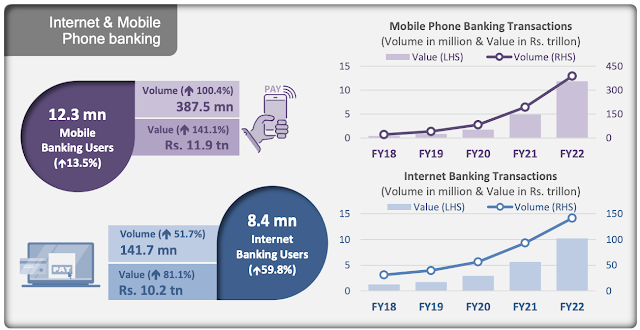Pakistani Academics Win Google Research Award For AI Paper on Machine Perception
Dr. Mohsen Ali and Dr. Izza Aftab have won Google Research Scholar Award 2021, according to an announcement on Google AI Blog. Dr. Ali is an assistant professor of computer science at the Information Technology University (ITU) in Lahore, Pakistan while Dr. Aftab is an assistant professor of economics at the same university.
 |
| Google Research Award Recipients Professors Izza Aftab & Mohsen Ali. Source: Izza Aftab |
The Google Award is for a joint paper authored by the two Pakistani professors. It is entitled "Is Economics From Afar Domain Generalizable?". This research deals with the challenges of assessing economic indicators through machine learning. The paper shows how such indicators for a region can be developed from satellite imagery and geo-spatial datasets as an alternative to the on-site collection of administrative data that is done annually or biennially. This data helps design policy interventions, and paints a geo-spatial picture of economic well-being in developing countries like Pakistan. The findings from this project can aid governments and businesses.
 |
| "Economics From Afar". Source: Dr. Mohsen Ali |
Dr. Izza Aftab's interests include theory and modeling of firm level innovation in developing countries, the Economics of climate change, and role of Big Data in informing Public Policy. Dr. Mohsen Ali's research interests include solving theoretical and practical problems entailing Computer Vision, Artificial Intelligence (AI) and Machine Learning, specifically on the problems related to image co-segmentation, remote sensing, medical imaging and affective computing, according to ITU website.
Related Links:
Haq's Musings
South Asia Investor Review
Pakistani-American is Top US Expert in Quantum Computing
AI Research at NED University Funded By Silicon Valley NEDians
Pakistan Hi-Tech Exports Exceed A Billion US Dollars in 2018
Pakistan Becomes CERN Member
Pakistani Scientists at CERN
Rising College Enrollment in Pakistan
Pakistani Universities Listed Among Asia's Top 500 Jump From 16 to 23 in One Year
Genomics and Biotech Research in Pakistan
Human Capital Growth in Pakistan
Educational Attainment in Pakistan
Pakistan Human Development in Musharraf Years



Comments
https://www.dawn.com/news/1701749/pakistani-students-win-laurels-in-international-competition
The success of Pakistani students who study in schools without walls in the global Huawei competition shows that there is no alternative to dedication and hard work, deputy chief executive officer of Huawei Pakistan Ahmed Bilal Masud said on Tuesday.
He was speaking at a ceremony to honour Sateesh Kumar, Bhagchand Meghwar and Iqra Fatima, winners of the Sixth Huawei ICT Competition 2021-2022.
They were able to beat competitors from different parts of the world at the Global Final of the event held in Shenzhen, China.
The participants were informed that Mr Kumar belonged to a remote village of Tharparkar that is not even listed in maps while Bhagchand Meghwar hails from a village in Dadu district.
“This proves that now, nobody in Pakistan can say that they lack resources, internet at homes or there was not enough support to make a name,” Mr Masud said, adding that, “these gentlemen did not even have walls in the schools they went to for initial learning.”
Similarly, he said the third member of the winning team was a female. “When she can fight the odds why not others,” he added.
Ms Fatima belongs to Bahawalpur and studied in Bahawalpur University, while the other two members had studied in Mehran University Jamshoro. Every year the competition is announced by Huawei, starting from the local level to encourage fresh students and fresh graduates to excel in information technology (IT) services.
Out of around 12,000 applicants in Pakistan in 2021, six were selected and Huawei managers formed two teams – team 1 and 2 for Pakistan. Sateesh Kumar led team 1 which continued its winning streak to beat competitors in the global final. The competition attracted 150,000 hopeful students from more than 2,000 universities in 85 countries and regions around the world.
The first prize in the competition was $20,000 for the winning team, along with mobile phones for each participant. Public Relations Director Wu Han said the success of the 2021 competition has shown that there was huge potential of growth among Pakistani youth.
https://pakobserver.net/good-news-for-pakistani-students-as-google-offers-45000-ai-scholarships/
ISLAMABAD – Search engine Google has been actively involved in supporting AI education in Pakistan, offering courses for students to learn about Artificial Intelligence, and now the tech giant comes with Google AI Essentials.
Google AI Essentials course for Pakistani students aimed at helping more individuals to learn latest AI skills.
The course will help beginners with no prior AI experience, offering much needed skills to enhance productivity and providing hands-on practice with various AI tools.
Google AI Course in Pakistan
At least 45,000 scholarships for Google Career Certificates are up for grabs. Google AI Essentials is available on Coursera in English and aims to teach people how to utilize AI tools to generate ideas and expedite daily tasks.
Students will help write effective prompts and use AI responsibly by recognizing potential biases. The Google Career Certificates (GCC) prepare learners for entry-level jobs in fields like Data Analytics, Cybersecurity, or Digital Marketing, providing new resources to help learners understand how professionals use AI in their fields and gain practical experience in applying AI to workplace scenarios.
In joint with Pakistan Freelancers Association (PAFLA), Google launched several programs to assist freelancers in the fifth most populated nation in enhancing their skills.